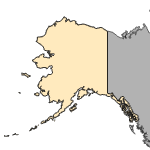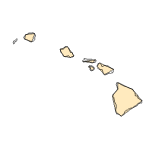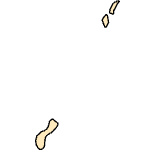Macrobrachium ohione
(Ohio shrimp)
Crustaceans-Shrimp
Native Transplant |
|
Common name: Ohio shrimp
Taxonomy: available through
www.itis.gov
Size: Females are larger than males, reaching 110 mm TL (Bowles et al. 2000)
Native Range: Macrobrachium ohione is the most widely distributed and abundant of the six river shrimp species in the United States (Bowles et al., 2000) and originally was described from the Ohio River. It also is found in the middle and lower Mississippi River from Illinois to Louisiana, west to Oklahoma and Texas, in the Atlantic drainage from Virginia to northern Florida, and in the Gulf region in Alabama and Mississippi (Bowles et al., 2000; Hobbs and Lodge, 2010).



|

Alaska |

Hawaii |

Puerto Rico &
Virgin Islands |

Guam Saipan |
Hydrologic Unit Codes (HUCs) Explained
Interactive maps: Point Distribution Maps
Nonindigenous Occurrences:
Table 1. States with nonindigenous occurrences, the earliest and latest observations in each state, and the tally and names of HUCs with observations†. Names and dates are hyperlinked to their relevant specimen records. The list of references for all nonindigenous occurrences of Macrobrachium ohione are found here.
Table last updated 12/10/2025
† Populations may not be currently present.
Ecology: This shrimp inhabits primarily freshwater rivers and streams; however, their life cycle is associated with estuarine waters for reproduction (Bowles et al., 2000). This species is amphidromous, where adults migrate downstream to spawn near estuaries, and juveniles swim back upstream and live as adults in freshwater (Bowles et al. 2000). Females, which are larger than males, can reach 110 mm in total length and are gray to green in color with light blue spots (Bowles et al., 2000). Females can produce 6,000–24,000 eggs with a lifespan of only 2 years (Huner, 1977).
Means of Introduction: Most likely a bait bucket introduction. There has been a commercial fishery throughout its native range for bait as well as for human consumption for many years (Bowles et al., 2000; Bauer and Delahoussaye, 2008).
Status: Unknown.
Impact of Introduction: Probably minimal impacts as this species is on the decline as a result of human impacts such as impoundments, river channelization, pollution, commercial fishing, and exotic predators (Barko and Hrabik, 2004; Bowles et al., 2000; Bauer and Delahoussaye, 2008; Hobbs and Lodge, 2010).
References: (click for full references)
Barko, V.A., and R.A. Hrabik. 2004. Abundance of Ohio shrimp
(Macrobrachium ohione) and glass shrimp
(Palaemonetes kadiakensis) in the unimpounded upper Mississippi River. American Midland Naturalist 151(2):265—273.
Bauer, R.T., and J. Delahoussaye. 2008. Life history migrations of the amphidromous river shrimp Macrobrachium ohione from a continental large river system. Journal of Crustacean Biology 8(4):622—632.
Bowles E.E., K. Aziz, and C.L. Knight. 2000. Macrobrachium (Decapoda: Caridea: Palaemonidae) in the contiguous United States—A review of the species and an assessment of threats to their survival. Journal of Crustacean Biology 29:158—171.
Hobbs, H. H. and D. M. Lodge. 2010. Decapoda. Pages 901-967 in Thorp, J. H. and A. P Covich (eds.), Ecology and Classification of North American Freshwater Invertebrates, Third Edition, Academic Press, Amsterdam.
Idelberger, Chuck - personal communication, 2012, Florida Fish and Wildlife Conservation Commission, Fish and Wildlife Research Institute, Charlotte Harbor Field Laboratory.
Author:
Benson, A.J.
Revision Date: 6/3/2013
Citation Information:
Benson, A.J., 2025, Macrobrachium ohione (S. I. Smith, 1874): U.S. Geological Survey, Nonindigenous Aquatic Species Database, Gainesville, FL, https://nas.er.usgs.gov/queries/FactSheet.aspx?SpeciesID=2878, Revision Date: 6/3/2013, Access Date: 12/10/2025
This information is preliminary or provisional and is subject to revision. It is being provided to meet the need for timely best science. The information has not received final approval by the U.S. Geological Survey (USGS) and is provided on the condition that neither the USGS nor the U.S. Government shall be held liable for any damages resulting from the authorized or unauthorized use of the information.